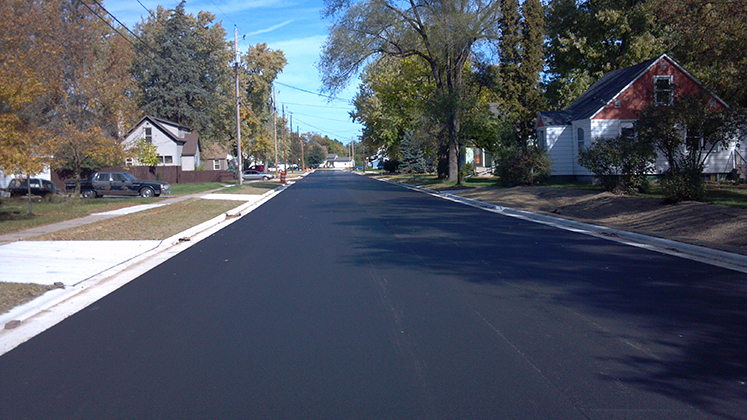Significant portions of the sanitary sewer collection system in the City of Wautoma were 50 to 100 years old. Continual maintenance was required to address numerous system problems including cracks, separations, leaky joints and laterals and root intrusion issues. Pipe materials in the system included PVC, ABS truss, concrete and vitrified clay. As a result, the City was dealing with excessive clear water inflow on a year-round basis, especially during wet weather periods and annual snowmelt. The inflow resulted in additional treatment costs and maintenance repairs by the City’s Department of Public Works.
The poor condition of old brick and block manholes allowed water to flow directly into the sewers from the surface as inflow. In addition, a significant amount of water entered the system from the roadway through manhole castings with large openings.

Improvements reduce flow by 30%
The City, with a population of about 2,200 individuals, pumps its sewage to the neighboring Silver Lake Sanitary District for treatment. Because of the excessive clear water inflow, the community was paying for unnecessary treatment. As a result of the project, the sanitary flow to the sanitary district has been reduced by 30%.
Surface water quality improvements
Prior to the completion of this project, the storm sewer in the area was undersized or not available. MSA’s design called for the addition of storm sewer and curb and gutter, increasing pedestrian safety and assisting with surface water drainage to reduce pollution to the nearby pristine White River, a Class I Trout Stream and Exceptional Resource Water.
The water quality of any new stormwater discharge to the White River is limited by Statute to have no greater than the background pollutant concentrations within the river. MSA carefully considered the drainage design to maximize the benefits to the street system without impacting the trout stream. MSA coordinated between several Wisconsin Department of Natural Resources (WDNR) staff to clarify the permitting requirements and successfully permit the project.

Deliberate phase development leads to success
The City maximized benefits of an upcoming roadway project by customizing solutions to rehabilitate the sanitary sewer system. The project began with planning, sewer televising, preliminary design to identify the condition of each system segment, design, construction and GIS asset management for system maintenance. In total, the project addressed:
- Reconstruction of 11,835 feet of sanitary sewer.
- Installation/replacement of 49 sanitary manholes.
- Rehabilitation of 23 sanitary manholes.
- Lining of 19,600 feet of sanitary sewer.
- Installation of 7,100 feet of storm sewer, including 97 storm inlets or area drains and 22 storm manholes.
- Reconstruction of 13,500 feet of roadway.
